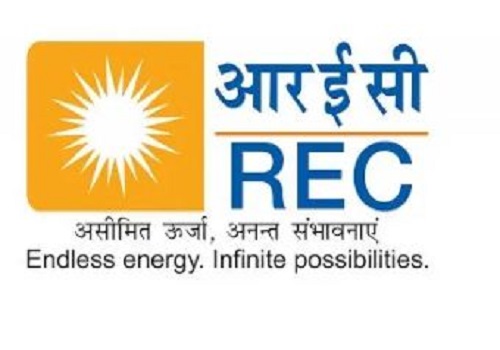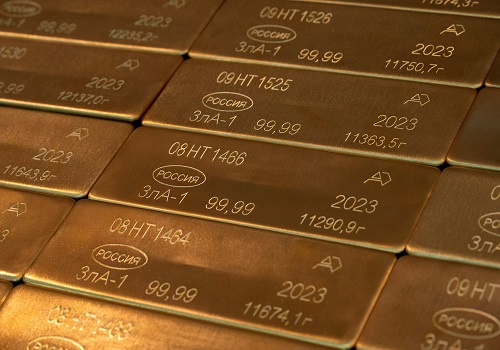Gold trading range for the day is 69290-69880 - Kedia Advisory

Gold
Gold prices rose by 0.69% to settle at 69,655, driven by safe-haven demand amid escalating Middle East conflict fears. The Federal Reserve maintained the federal funds rate at 5.25%-5.50%, signaling a potential rate cut by acknowledging rising unemployment. The Bank of Japan raised its short-term rate to 0.25% from 0%-0.1% to normalize monetary policy. U.S. private payrolls increased by 122,000 jobs in July, below expectations, indicating a gradually moderating labor market. In India, gold premiums surged to a decade-high as import duty cuts lowered prices, boosting demand. Dealers charged a premium of up to $20 an ounce, the highest since 2014, compared to last week's $65 discount. In China, dealers offered a $10 discount to a $2 premium per ounce on international spot prices. In Singapore, gold sold at a discount of $1 to a premium of $2.20 per ounce. In Hong Kong, prices ranged from a discount of $1 to a premium of $1.20 per ounce. In Japan, gold was sold at a $3 discount to par due to overseas ETF inflows. India's gold demand in the June quarter fell by 5% year-on-year, but the World Gold Council expects consumption to improve in the second half of 2024 due to local price corrections following import tax reductions and good monsoon rains. Technically, the market is under short covering with open interest dropping by 0.84% to 19,683 as prices rose by 477 rupees. Gold is supported at 69,475, with resistance at 69,770, and a potential test of 69,880 if resistance is breached.
Trading Ideas:
* Gold trading range for the day is 69290-69880.
* Gold rose driven by safe-haven demand amid fears of escalating conflict in the Middle East.
* Federal Reserve signals first cut in September
* U.S. private payrolls increased far less than expected in July
Silver
Silver settled up by 1.13% at 83596, driven by a weakening dollar index, which fell to the 104 level, its lowest in about two weeks. The Federal Reserve maintained the federal funds rate at a 23-year high of 5.25%-5.50%, but the new statement hinted at a closer rate cut due to a rising jobless rate and a renewed focus on full employment. Fresh labor market data supported these expectations, with the ADP report showing the smallest job addition by private employers in six months and a slight rise in employment costs for Q2. Pending home sales in the U.S. surged by 4.8% in June 2024, marking the sharpest increase of the year, although they fell 2.6% from the previous year. Compensation costs for civilian workers rose by 0.9% in Q2 2024, slightly below expectations. The U.S. labor market remains robust, with job openings at 8.18 million as of June's end, indicating high labor demand despite a slowing momentum. The S&P CoreLogic Case-Shiller 20-city home price index increased by 6.8% year-on-year in May 2024, slightly above forecasts. Technically, the silver market is experiencing short covering, with a 3.65% drop in open interest, settling at 26857 contracts, while prices rose by 937 rupees. Silver has support at 83000, with a potential test of 82410 levels if breached. Resistance is expected at 84070, with further upward movement possibly testing 84550.
Trading Ideas:
* Silver trading range for the day is 82410-84550.
* Silver gains as the dollar index fell to the 104 level, the lowest in about two weeks.
* Federal Reserve signals first cut in September
* ADP report showing private employers added the least jobs in six months while employment costs rose slightly less than expected in Q2.
Crudeoil
Crude oil prices surged by 3.69% to settle at 6,524, driven by concerns over potential supply disruptions amid escalating Middle East tensions. The assassination of Hamas leader Ismail Haniyeh in Tehran and Israel's claim of killing Hezbollah's top commander in Beirut have heightened fears, with Iran vowing retaliation. This geopolitical instability has intensified worries about oil supply. Additionally, API data revealed a significant decrease in US crude oil inventories by 4.5 million barrels last week, marking the fifth consecutive week of falling inventories and the largest decline this month. EIA data confirmed a 3.436 million barrel drop in US crude inventories for the week ending July 26th, well above the expected 1.6 million barrel draw, continuing the trend of sharper-than-expected declines. Cushing, Oklahoma, delivery hub stocks fell by 1.1 million barrels, marking the fourth straight draw, while gasoline stocks decreased by 3.7 million barrels despite a decline in product supplied. However, distillate fuel inventories unexpectedly rose by 1.5 million barrels due to a sharp drop in product supplied. Despite these factors, lingering demand concerns from China, evidenced by an 11% drop in fuel oil imports in the first half of 2024, are capping further price increases. Technically, the market is under short covering with open interest dropping by 41.55% to 8,145 as prices rose by 232 rupees. Crude oil is supported at 6,396, with potential to test 6,268 levels if this support is breached. Resistance is expected at 6,594, and a move above this level could see prices testing 6,664.
Trading Ideas:
* Crudeoil trading range for the day is 6268-6664.
* Crude oil prices soared due to concerns about potential supply disruptions
* Crude oil inventories in the US fell by 3.436 million barrels
* API data showed that US crude oil inventories decreased by 4.5 million barrels last week
Naturalgas
Natural gas settled down by 3.52% at 172.5 due to rising output and forecasts for milder weather and reduced gas demand next week. This decline occurred despite expectations of record-breaking heat later in the week, which could increase gas consumption by power generators to an all-time high. Additionally, gas flow to Freeport LNG in Texas reached a 14-month high after resuming full service following a nine-day outage due to Hurricane Beryl in early July. Currently, there is about 17% more gas in storage than usual for this time of year. Storage builds have been smaller recently because several producers cut output after futures prices dropped to 3-1/2-year lows earlier this year. LSEG reported that gas output in the Lower 48 states rose to an average of 102.5 billion cubic feet per day (bcfd) so far in July, up from 100.2 bcfd in June and 99.4 bcfd in May. U.S. output hit a monthly record of 105.5 bcfd in December 2023. U.S. utilities added 22 billion cubic feet of gas into storage during the week ending July 19, 2024, surpassing market expectations of a 15 billion cubic feet increase. This raised stockpiles to 3,231 Bcf, 249 Bcf higher than last year and 456 Bcf above the five-year average of 2,775 Bcf. Technically, the market is experiencing fresh selling, with a 17.46% gain in open interest, settling at 50968 contracts while prices fell by 6.3 rupees. Natural gas has support at 168.8, with a potential test of 165.2 levels if breached. Resistance is expected at 178.4, with further upward movement possibly testing 184.4.
Trading Ideas:
* Naturalgas trading range for the day is 165.2-184.4.
* Natural gas slid on rising output and forecasts for less hot weather and lower gas demand.
* That price decline came despite forecasts for record-breaking heat later this week
# The amount of gas flowing to Freeport LNG in Texas was on track to reach a preliminary 14-month high.
Copper
Copper settled up by 1.69% at 807.4 as China’s leaders pledged to enhance support measures to stabilize market confidence and achieve full-year growth targets. Weak business activity data in China increased the likelihood of further stimulus, with manufacturing activity contracting slightly in July and services sector growth slowing to an eight-month low. However, global economic uncertainties and trade tensions continued to impact the demand outlook for industrial metals. Additionally, reports emerged that some Chinese smelters are pursuing new projects to comply with output mandates, challenging earlier reports of a joint production cut to boost treatment charges. Copper inventories in warehouses monitored by the Shanghai Futures Exchange (ShFe) declined to a two-month low of 301,203 tons. According to Citi Research, copper prices may struggle for direction in the coming weeks but are expected to recover to $9,500 per ton within three months and reach $11,000 by early 2025, driven by anticipated Fed rate cuts and expected inventory draws in the second half of 2024. The copper premium in China surged to $25 a ton, its highest in over three months. The global refined copper market showed a 65,000 metric ton surplus in May, compared to an 11,000 metric ton surplus in April, according to the International Copper Study Group (ICSG). World refined copper output in May was 2.37 million metric tons, while consumption was 2.31 million metric tons. Technically, the market is experiencing short covering with a 4.7% drop in open interest, settling at 13,247 contracts while prices rose by 13.4 rupees. Copper has support at 800.3, with potential testing of 793 levels if breached. Resistance is likely at 812.6, with further upward movement possibly testing 817.6.
Trading Ideas:
* Copper trading range for the day is 793-817.6.
* Copper rose as China’s leaders pledged to step up support measures
* Weak business activity data in China also raised the odds of further stimulus from authorities.
* Chile's copper output in the Andean nation, decreased 1.25% year-on-year in June to 452,850 metric tons.
Zinc
Zinc prices rose by 1.21% to settle at 254.15, buoyed by expectations for increased consumption and stimulus measures following a meeting of China's top decision-making body. The rebound in zinc prices is supported by the anticipation of further stimulus after China's official factory data showed a slowdown, prompting the Politburo to call for policies to increase wages and boost domestic consumption. In June, China's refined zinc production was 545,800 mt, up 1.81% MoM but down 1.2% YoY, with H1 output totaling 3.182 million mt, slightly higher than expected. Domestic zinc alloy production in June was 93,000 mt, down 1,800 mt MoM. The production of domestic smelters exceeded expectations due to higher-than-expected output in Guangxi, Gansu, and Guizhou. However, some regions experienced production reductions due to maintenance shutdowns. The supply of zinc concentrate remains tight, and refinery raw material inventories continue to be consumed more than replenished, with an expected decline in domestic refined zinc production in the third quarter. The total zinc ingot inventory in seven regions decreased to 169,100 mt, a significant reduction compared to earlier in the month. Zinc inventories in Shanghai Futures Exchange-monitored warehouses fell by 5.1% from the previous Friday. Additionally, China's MMG Ltd halted operations at its Dugald River zinc mine in Australia for two months of repair work, exacerbating the tight zinc concentrates market. Technically, the market is under fresh buying, with a 3.08% increase in open interest to settle at 2,005 while prices rose by 3.05 rupees. Zinc is supported at 252.4, with a potential test of 250.5 levels if this support is breached. Resistance is expected at 255.8, and a move above this level could see prices testing 257.3.
Trading Ideas:
* Zinc trading range for the day is 250.5-257.3.
* Zinc prices rebounded on hope for China's stimulus after weak factory data.
* Beijing's Politburo signalled a sense of urgency to revive the $17 trillion economy
* In June, China's refined zinc production was 545,800 mt, up 1.81% MoM but down 1.2% YoY.
Aluminium
Aluminium settled up by 2.43% at 214.55 after China’s leaders pledged increased support measures to stabilize market confidence at a Politburo meeting. Despite this, data showed that manufacturing activity in China contracted slightly in July, with services sector growth hitting an eight-month low. The total social inventory of aluminum ingots decreased by 7,000 mt WoW to 790,000 mt, which is still 254,000 mt higher YoY. China lowered deposit rates, and Canada’s rate cut met expectations, increasing global market liquidity. The Third Plenum of the Communist Party of China made systematic arrangements for further reforms, which are expected to stabilize market confidence. Aluminium inventories in warehouses monitored by the Shanghai Futures Exchange fell by 0.6% from last Friday. Global primary aluminium output in June rose by 3.2% year-on-year to 5.94 million tonnes, with the first half of 2024 seeing a 3.9% rise to 35.84 million metric tons, driven mainly by higher production in China. China's aluminium output grew by 7% to 21.55 million tons in the first half of 2024, with June’s production being the highest in nearly a decade. The International Aluminium Institute estimated China's production at 21.26 million tons in January-June, up 5.2%. Output in Western and Central Europe rose by 2.2%, and production in Russia and Eastern Europe increased by 2.4%. The Gulf region's output increased by 0.7%. Technically, the market is under short covering with a 10.06% drop in open interest, settling at 4659 contracts while prices rose by 5.1 rupees. Aluminium has support at 211, with a potential test of 207.4 levels if breached. Resistance is expected at 216.8, with further upward movement possibly testing 219.
Trading Ideas:
* Aluminium trading range for the day is 207.4-219.
* Aluminium gains after China’s leaders pledged to step up support measures
* The Chinese government refrained from passing stimulus to target the aggressive slowdown in the manufacturing sector.
* The total social inventory of aluminum ingots is 254,000 mt higher YoY.
Cottoncandy
Cottoncandy settled up by 0.34% at 56860, driven by a significant decline in cotton acreage in Punjab, Haryana, and Rajasthan. These states reported a total of 10.23 lakh hectares under cotton, a drop from last year's 16 lakh hectares. Punjab's cotton area decreased to 97,000 hectares from its historical norm of up to 7.58 lakh hectares in the 1980s and 1990s. Rajasthan's area under cotton reduced to 4.75 lakh hectares from 8.35 lakh hectares last year, and Haryana's area fell to 4.50 lakh hectares from 5.75 lakh hectares in 2024. Additionally, delays in shipments from the US and Brazil have increased demand for Indian cotton from neighboring countries' mills. A firm trend in cottonseed prices is supporting cotton prices, even as sowing for the kharif 2024 season has commenced in Karnataka, Telangana, and Andhra Pradesh. In Telangana, some chili farmers are likely to switch to cotton due to weak spice crop prices. The 2024/25 U.S. cotton projections show higher beginning and ending stocks, with unchanged production, domestic use, and exports. The season average upland farm price is down to 70 cents per pound, with ending stocks 400,000 bales higher at 4.1 million. Globally, the 2024/25 cotton balance sheet shows increased beginning stocks, production, and consumption, with world trade unchanged. World ending stocks are projected 480,000 bales higher at 83.5 million. Production forecasts are raised based on higher area and yield in Burma. In Rajkot, a major spot market, the price ended at 27256.4 Rupees, down by 0.25%. Technically, the market is under fresh buying with a 1.79% gain in open interest, settling at 171 contracts while prices rose by 190 rupees. Cottoncandy has support at 56660, with a potential test of 56460 levels if breached. Resistance is likely at 57020, with further upward movement possibly testing 57180.
Trading Ideas:
* Cottoncandy trading range for the day is 56460-57180.
* Cotton seen supported as area under cotton in North India drops
* India's cotton exports in the first nine months of 2023-24 increased by 68% to 26 lakh bales
* CAI estimates closing stocks at 20 lakh bales at the end of 2023-24, down from 28.90 lakh bales in the previous year
* In the global 2024/25 cotton balance sheet, beginning stocks, production and consumption are increased.
Turmeric
Turmeric prices rose by 2.11% to settle at 15,858 as farmers held back stocks anticipating further price increases. However, the upside was limited by news of increased sowing. Turmeric sowing in Erode has reportedly doubled compared to last year, with Maharashtra, Telangana, and Andhra Pradesh estimating a 30-35% increase. Last year, turmeric was sown on about 3-3.25 lakh hectares, which is expected to rise to 3.75-4 lakh hectares this year. Despite the increased sowing, unfavorable weather last year reduced production to an estimated 45-50 lakh bags, with an additional outstanding stock of 35-38 lakh bags. Even with increased sowing, the upcoming crop is expected to be around 70-75 lakh bags, with no outstanding stock, potentially leading to a supply shortfall in 2025. Turmeric exports during April-May 2024 dropped by 20.03% to 31,523.94 tonnes compared to 39,418.73 tonnes in the same period in 2023. However, May 2024 saw a 23.43% increase in exports to 17,414.84 tonnes compared to April 2024. Imports surged by 417.74% to 14,637.55 tonnes during April-May 2024 compared to the same period in 2023. Nizamabad, a major spot market, saw prices end at 16,382.3 rupees, gaining 1.73%. Technically, the market is under short covering, with open interest dropping by 0.18% to settle at 15,534 while prices increased by 328 rupees. Turmeric is supported at 15,516, with a potential test of 15,172 levels if this support is breached. Resistance is expected at 16,222, and a move above this level could see prices testing 16,584.
Trading Ideas:
* Turmeric trading range for the day is 15172-16584.
* Turmeric gains as farmers are holding back stocks in anticipation of a further rise.
* Turmeric sowing on the Erode line is reported to be double as compared to last year.
* Turmeric was sown in about 3/3.25 lakh hectares in the country last year, which is estimated to increase to 3.75/4 lakh hectares this year.
* In Nizamabad, a major spot market, the price ended at 16382.3 Rupees gained by 1.73 percent.
Jeera
Jeera settled up by 0.45% at 26835 amid robust domestic and export demand coupled with tight global supplies. However, the upside was limited by expectations of higher production, with farmers holding back stocks in anticipation of better prices. This season, jeera production is likely to be 30% higher, estimated at 8.5-9 lakh tonnes, due to a substantial increase in the cultivation area, particularly in Gujarat and Rajasthan. Globally, China's cumin output has surged to over 55-60 thousand tons, while Turkey and Afghanistan also expect higher production. Despite increased global production, high prices last season incentivized farmers, leading to significant increases in cultivation areas in Syria, Turkey, and Afghanistan. These new supplies are expected to bring down cumin prices. Additionally, reduced export trade has contributed to the price drop, signaling a shift in global market dynamics. In India, favorable weather and increased sowing areas in major producing regions have doubled production compared to last year. Analysts estimate a substantial increase in cumin exports, potentially reaching about 14-15 thousand tonnes in February 2024. Despite volatile cumin exports in 2023 due to soaring domestic prices, increased sown areas and declining international prices in 2024 are likely to boost exports. India's average annual cumin export is approximately 0.2 million tonnes, though 2023 saw a 30-10% decline with only 1,76,011 tonnes exported. Technically, the market is under fresh buying, with a 2.07% gain in open interest, settling at 26855 contracts while prices rose by 120 rupees. Jeera has support at 26690, with a potential test of 26550 levels if breached. Resistance is likely at 26980, with further upward movement possibly testing 27130.
Trading Ideas:
* Jeera trading range for the day is 26550-27130.
* Jeera gains amid robust domestic and export demand besides tight global supplies.
* China's cumin output soared to over 55-60 thousand tons from the previous 28-30 thousand tons.
* Turkey anticipates producing 12-15 thousand tons, while Afghanistan's output could double.
* In Unjha, a major spot market, the price ended at 26771 Rupees dropped by -0.29 percent.
Views express by all participants are for information & academic purpose only. Kindly read disclaimer before referring below views.






















